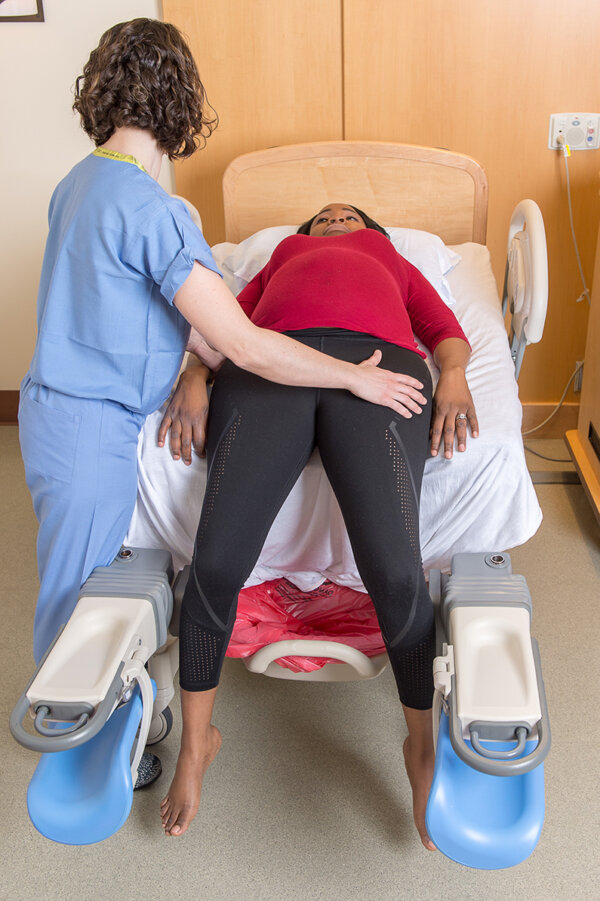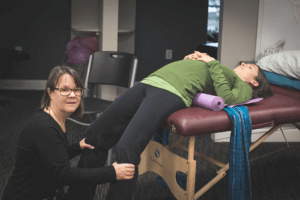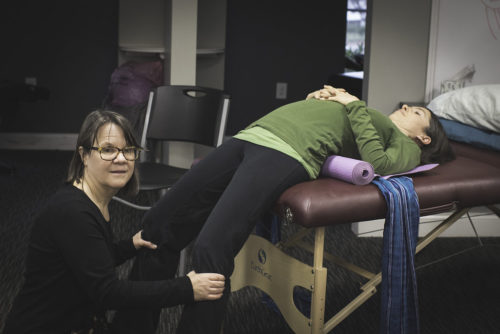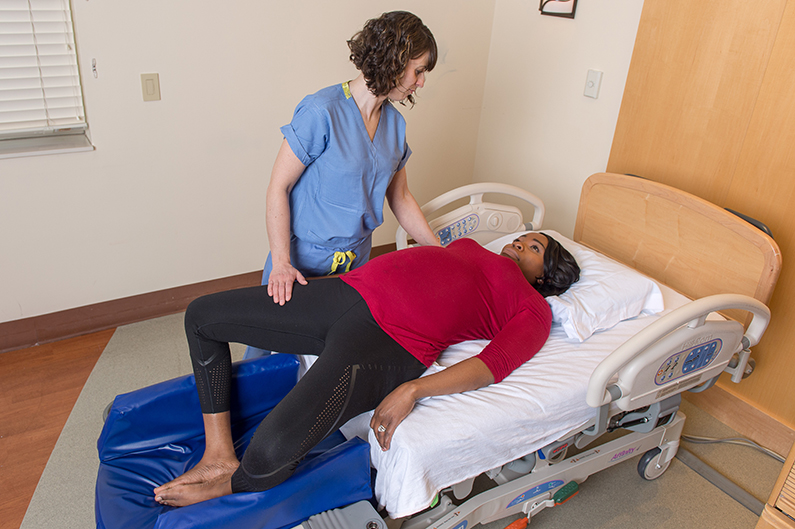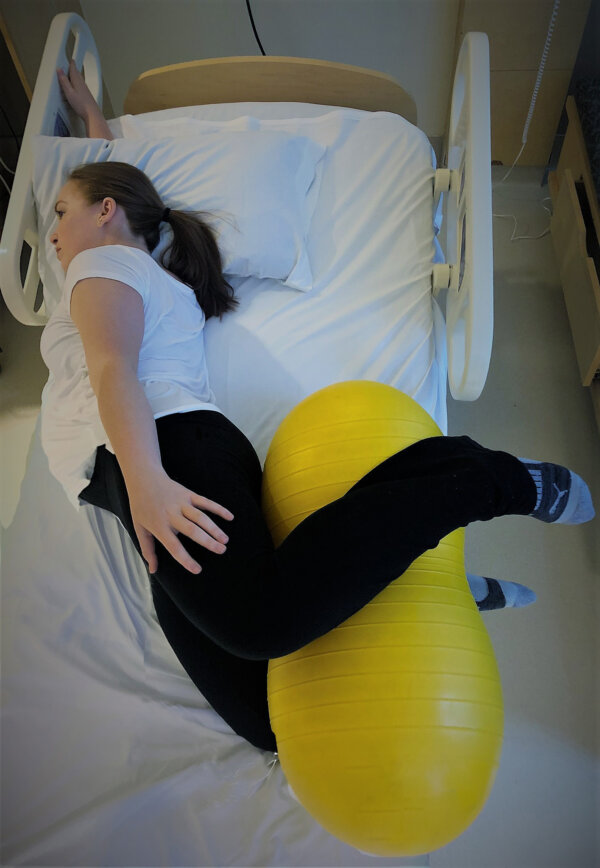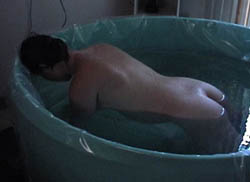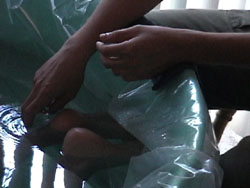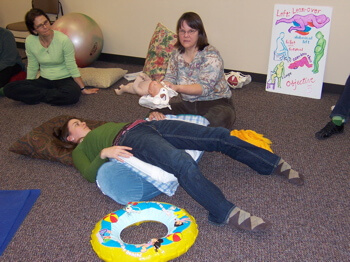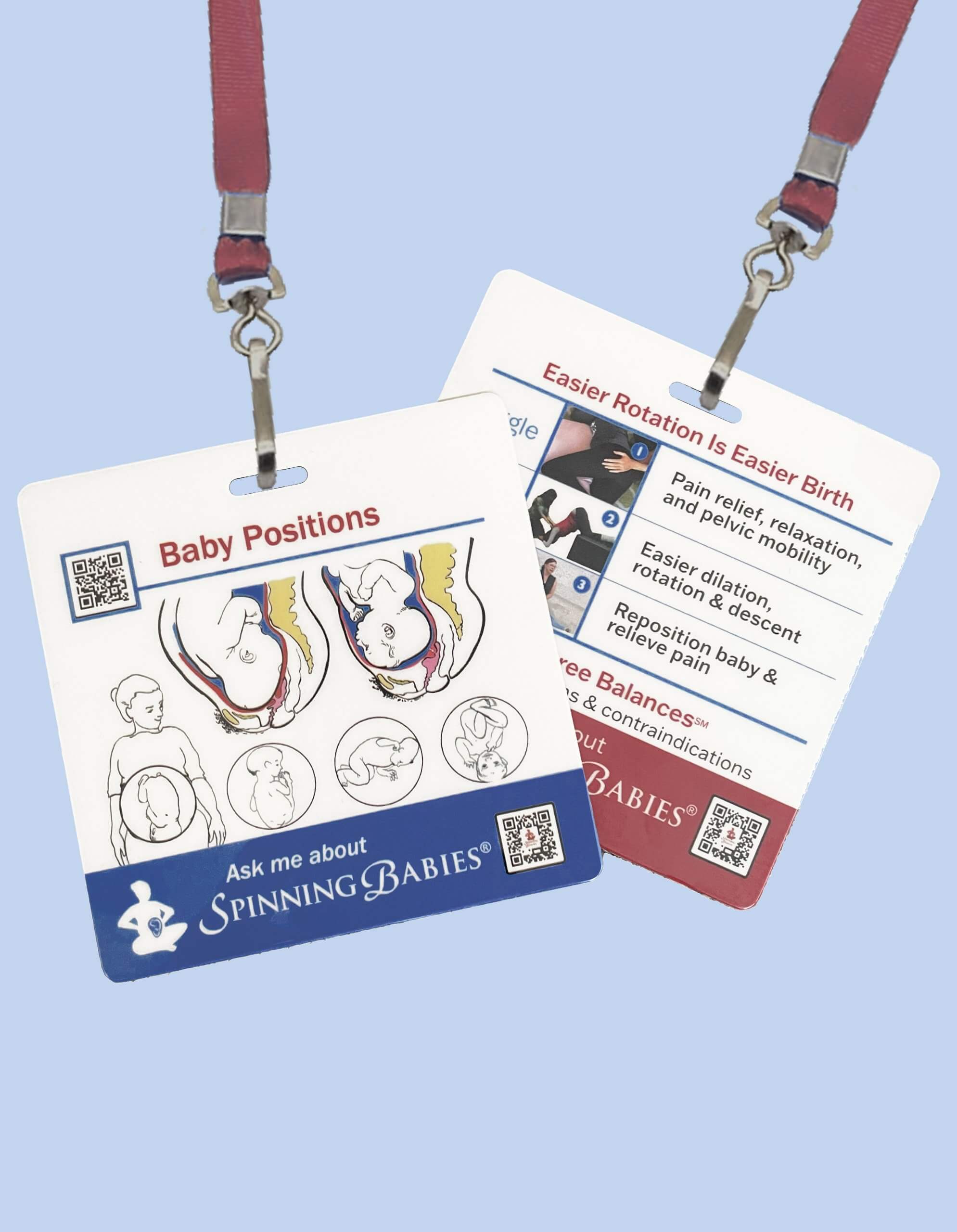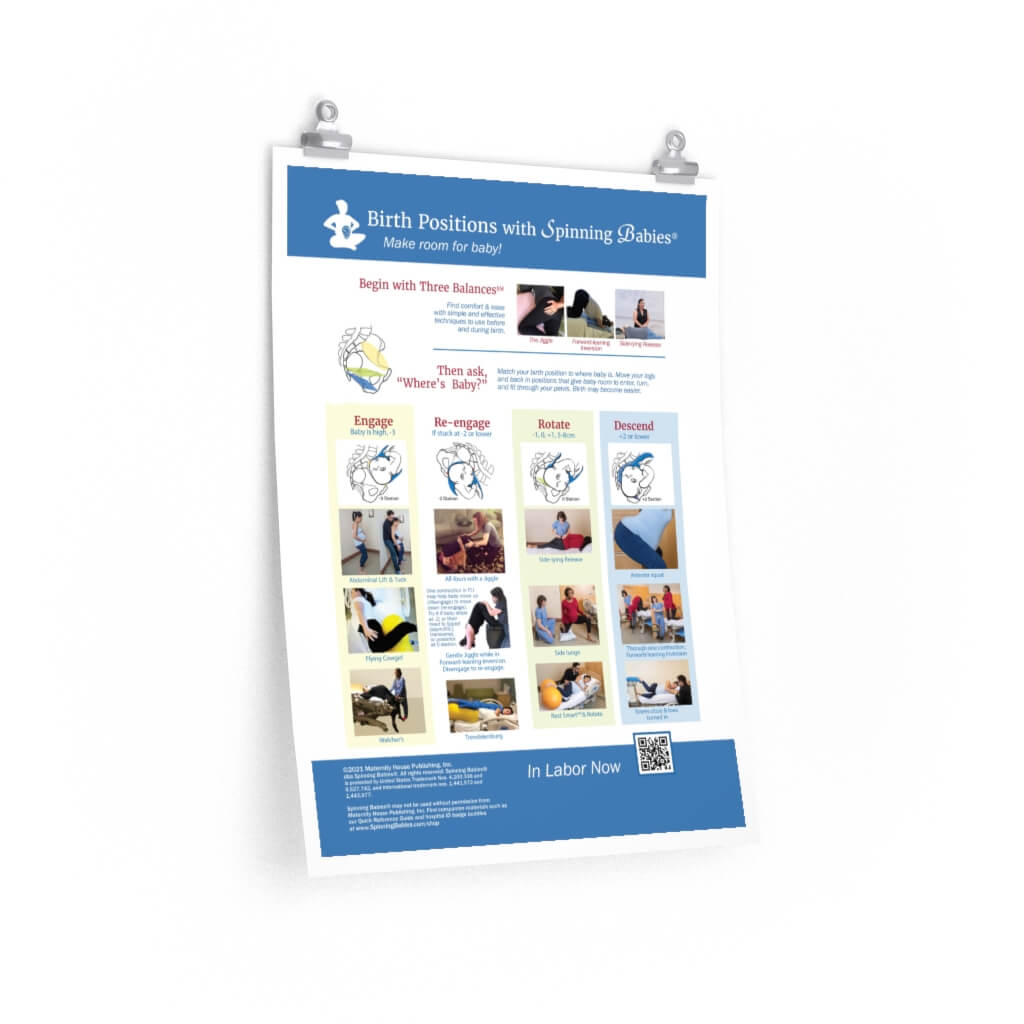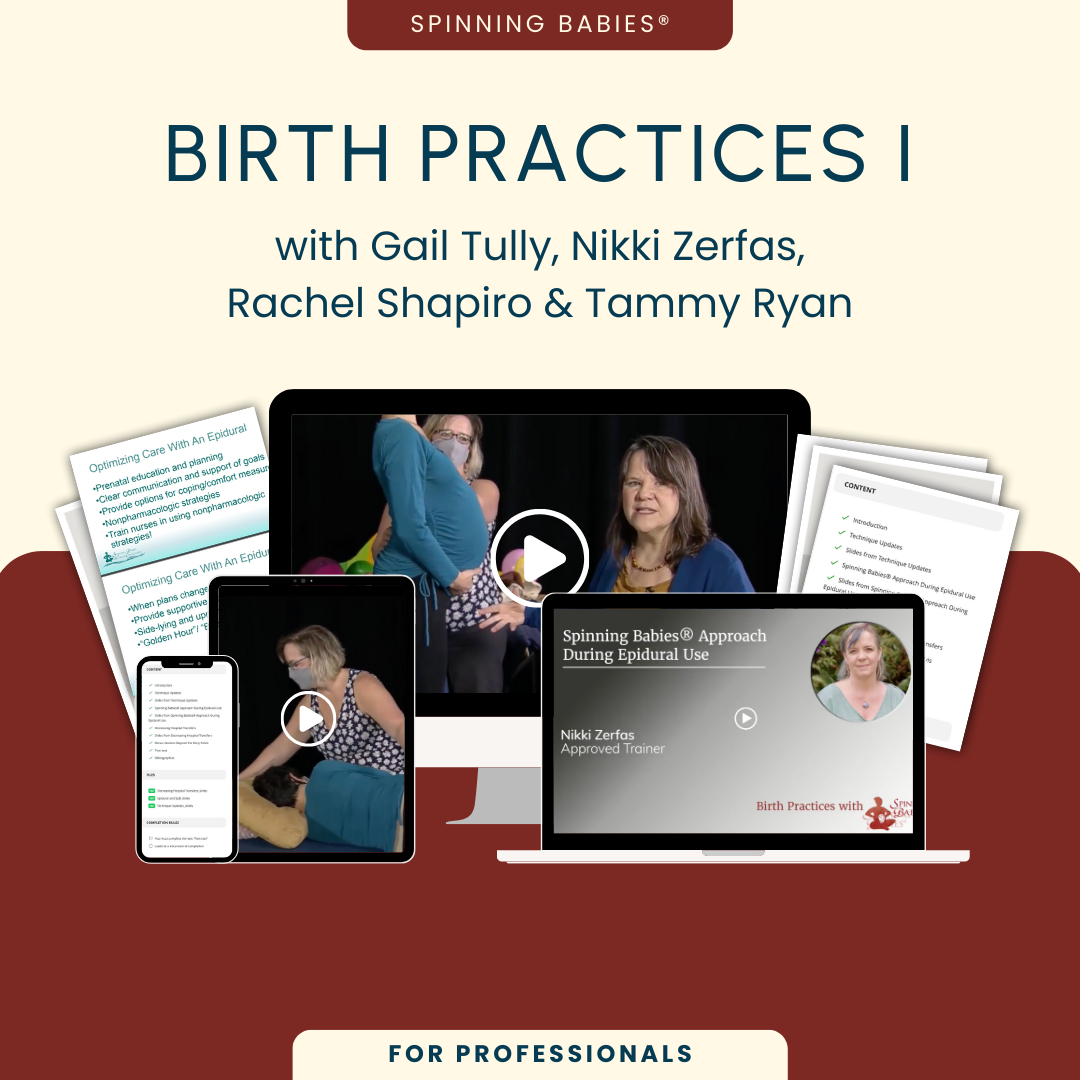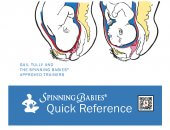What if there isn’t a high bed or a bed that raises?
Open the brim by using a Trochanter Roll. The person is on their back. Lift the pelvis by a 15-18 inch (38-45 cm) roll of material under the lower buttocks at the level of the trochanter of the femur. In simple language, put a big roll under the buttock where the bottom of the butt cheeks end. This is the very top of the thigh.
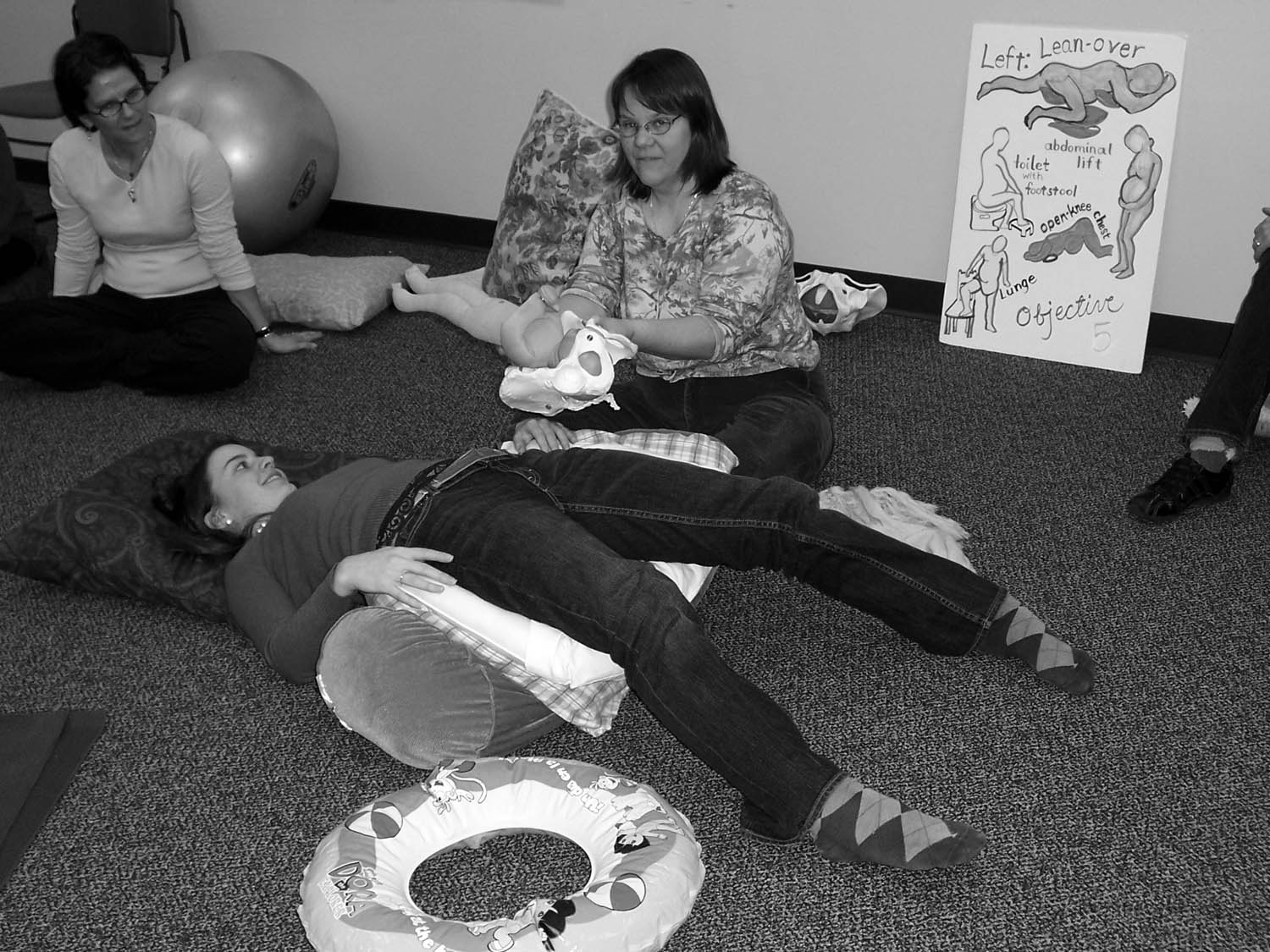
This position, like Walcher’s position opens the brim front to back. The pubic bone opens away from the spine. This makes more room for the baby to get into the pelvis.
Have the birthing person lie over a large, tight and firm roll. The tightly packed roll is placed at the top of the thighs, right where the thigh bone connects to the hip socket. This is lower than the sacrum where you might imagine she needed support. They lay back like that, almost a backbend, through three contractions. Stay in between the contractions, too. It’s tough. The lower back is not supported. Don’t put the roll at the small of the back or at the sacrum. It goes at the top of the leg bone.

